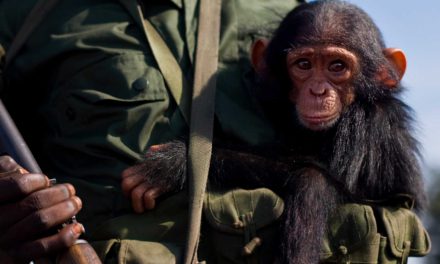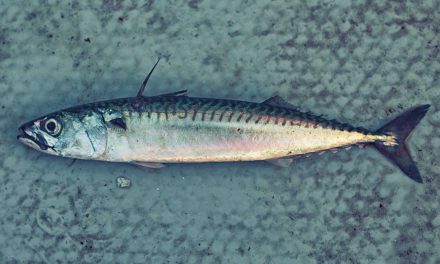Humans are inextricably entwined with wildlife; the United Nations (UN) Sustainable Development Goals highlight that the conservation, protection, restoration, and sustainable use of wildlife is critical to the peace and prosperity of people and the planet.
For millennia, humans have relied on wild plants and animals for shelter, medicines, raw materials, clothing, and sustenance. Rare species also function as status symbols in furniture, art, clothing, foods, and as pets. Some of this trade is legal and sustainable, fundamental to global economies. The annual legal wildlife trade of three billion live organisms contributes $300 billion to the global economy, supporting millions of people.
This demand means that every single species, whether it flies, swims, slithers, or crawls, has a price on its head.
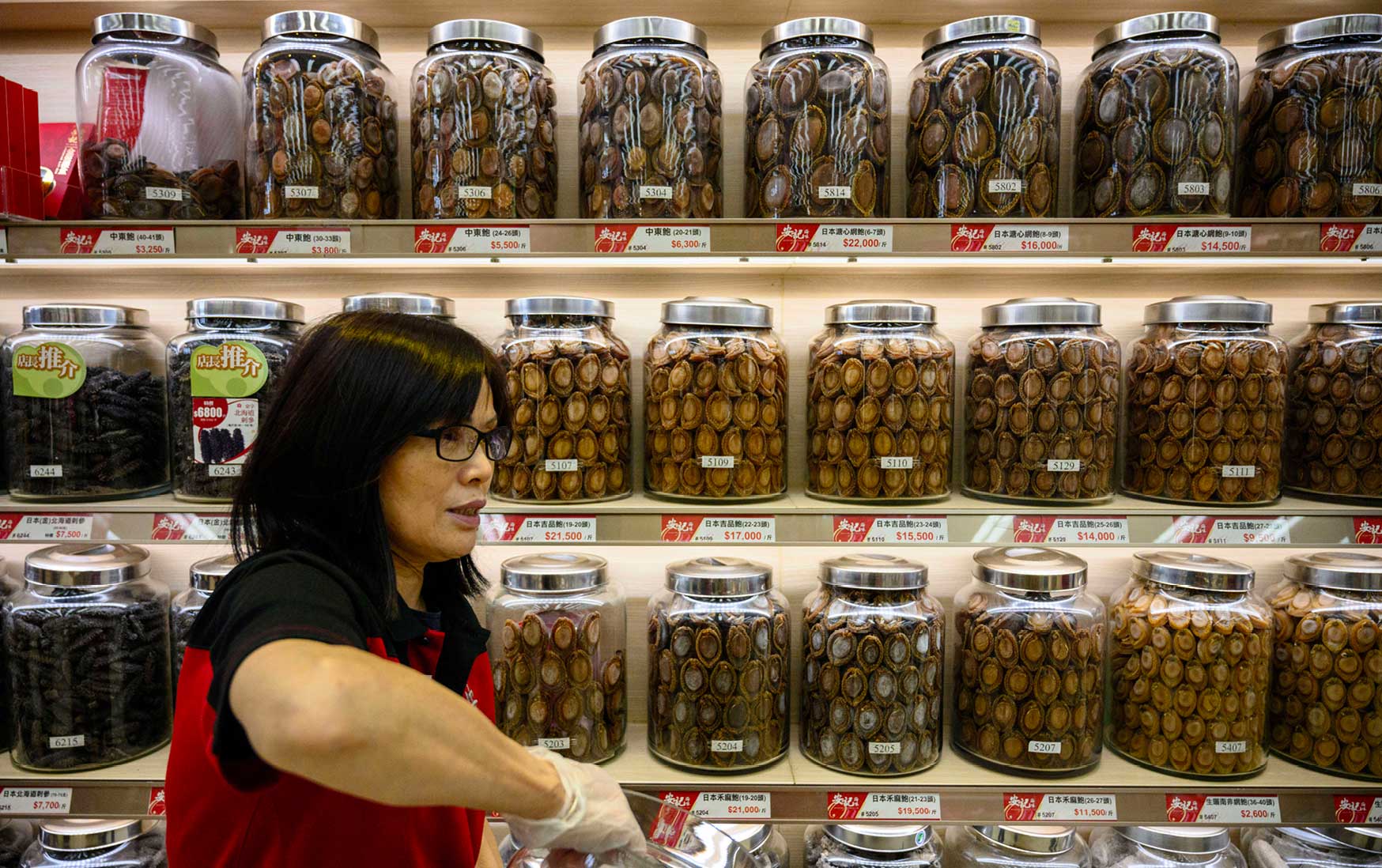
A shop assistant in front of jars containing dried abalone and other seafood goods in a Hong Kong shop. Photo: Anthony Wallace/AFP
The wildlife trade is regulated by the UN Convention on International Trade in Endangered Species of Wild Fauna and Flora (CITES). This system of quotas, permits, duties, and transfer restrictions is supported by 170 member countries. Unfortunately, the demand for wildlife far exceeds sustainable off-take for many species, and the illegal wildlife trade (IWT) threatens sensitive populations worldwide.
Source countries export coveted endemic species through transit countries with poor enforcement, limited resources, and corruption, then move to more affluent destination countries. The profits of IWT follow a similar route, with the most significant profits garnered by the criminals in destination countries and the highest risk and lowest reward falling to low-level poachers in source countries.
As the fourth-largest trafficking industry, after drugs, humans, and weapons, the value of IWT may exceed $20 billion annually and is genuinely global. According to the UN World Wildlife Crime Report (2020), nearly 6,000 different species were seized between 1999-2018. No single species comprised more than 5% of seizures, no single country was the source of more than 9% of the seized shipments and suspected traffickers hailed from 150 countries.
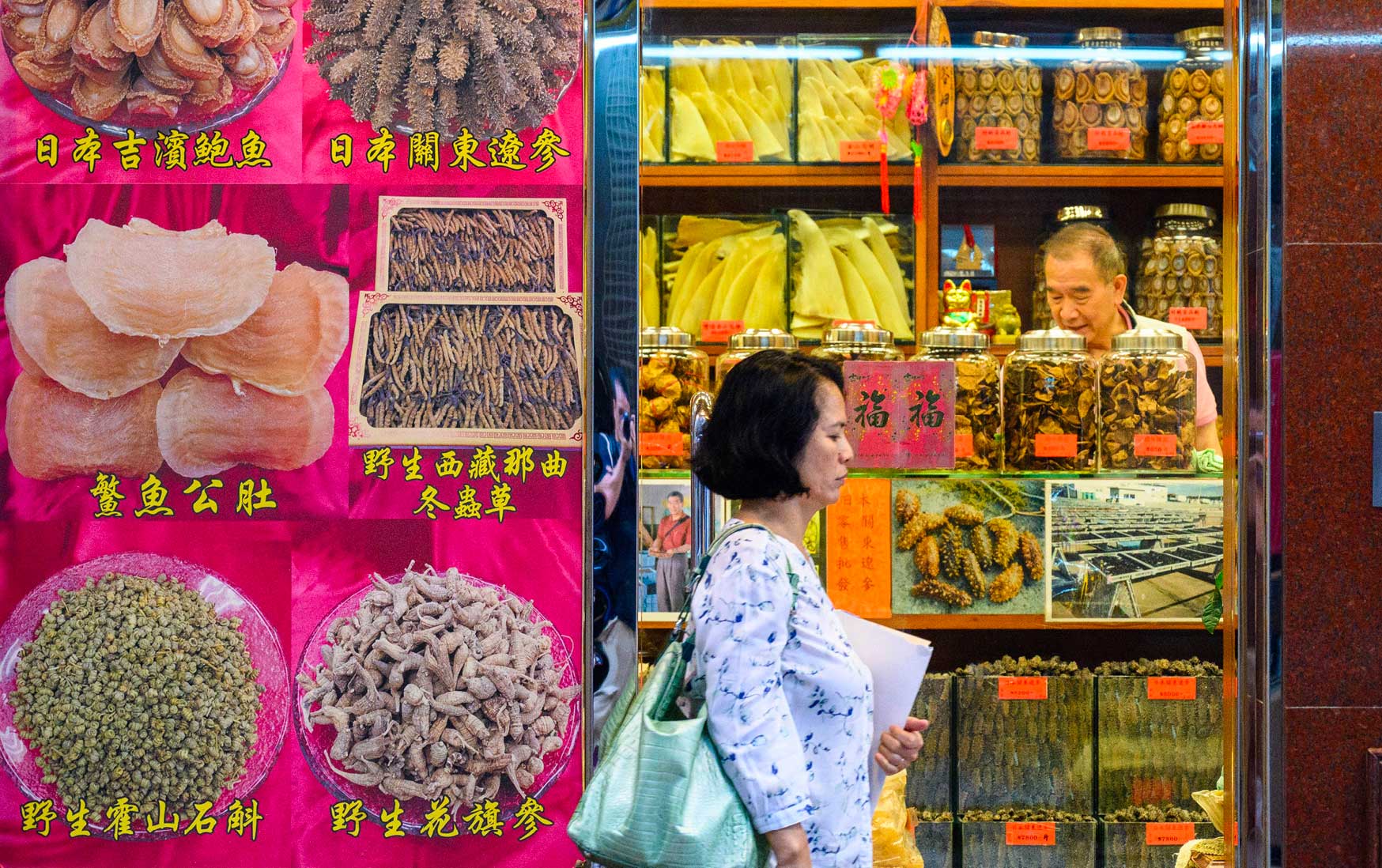
A woman walks past a shop selling dried abalone, sea cucumber and other dried seafood goods in Hong Kong. Photo: Anthony Wallace/AFP
Aside from biological consequences, IWT destabilises communities, increases related criminal activity, slows economic development and removes revenue from excise and import/export duties.
Much of the wildlife that originates in Africa is destined for Asia, particularly China, where the burgeoning economy puts luxury items like shark fin soup, rhino horn powder-spiked cocktails, and exotic pets within reach of the middle class. In South Africa, abalone and pangolin figure heavily in IWT.
Abalone is a large sea snail distributed globally in coastal waters. Abalone, fresh, frozen, or dried, is considered a delicacy and status symbol in East Asia. Of the five species that inhabit coastal South Africa, perlemoen abalone is an endemic species that is particularly prized.
Perlemoen, fish swim bladders, shark fin, and sea cucumber comprise the global “big four” of illegally harvested seafood. Rampant overfishing since the mid-1960s has likely extirpated small populations and fragmented their range. Roughly two-thirds of confiscated perlemoen have not reached sexual maturity; the lost reproductive opportunity amplifies the biological impacts of poaching.
The International Union for Conservation (IUC) Red List identifies perlemoen as endangered and decreasing, but South Africa permits tightly regulated commercial harvest. The legal take likely has minimal impact on population levels, but the legal trade is eclipsed by illegal harvest and provides a readily available conduit to launder illicit perlemoen. The legal trade also fosters the perception that all abalone is legal and sustainable, alleviating consumer concern for conservation impacts. Though the South African government banned all commercial abalone fishing in 2007, the protections for perlemoen lasted only until 2010, when South Africa removed it from CITES, blaming implementational challenges.
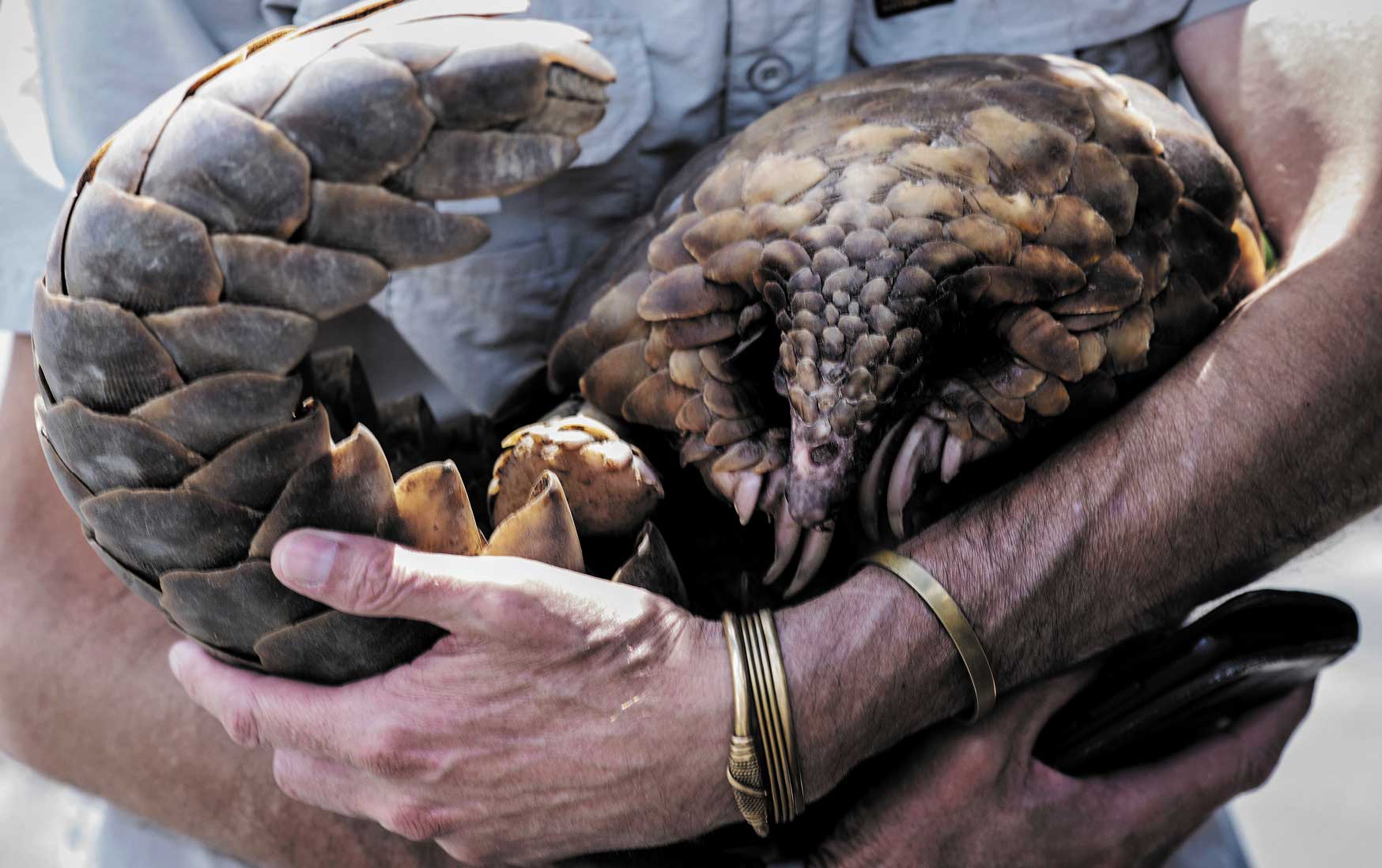
A Pangolin Counter-Poaching Team member holds a pangolin rescued during a joint operation with South African Police Services (SAPS) in Johannesburg in March 2021. Photo: Luca Sola/AFP
The world’s most trafficked mammal, the pangolin, is found throughout Africa and Asia. Pangolins are small, nocturnal anteaters covered in hard scales. Their primary defensive tactic is to roll into an armoured ball, an effective technique against natural predators but utterly useless against humans with weapons. IWT in meat and scales threatens all eight species with extinction.
Of the four African species, the Temminck’s pangolin is the only one that occurs in South Africa. Its range spans the country’s northern border, from west to east. Like abalone, pangolin meat is a status symbol and delicacy in East Asia. Pangolin scales are composed of keratin, the same substance as human fingernails. Traditional Chinese Medicine (TCM) uses pangolin scales for treating conditions as disparate and indefinite as poor circulation and abdominal pain. These claims have been disproved for the vast majority of TCM remedies; consuming pangolin scales is roughly the medical equivalent of eating human fingernails.
In South Africa, the trade networks of pangolins and abalone have historically remained distinct, possibly because wildlife traffickers tend to specialise in one species. South Africa’s primary role as a transit hub for pangolin suggests that traffickers may traditionally have been loosely organised and movement through the country was driven by vagaries in enforcement and source availability.
Pangolin seizures, however, are increasingly associated with gang and drug activity, suggesting that the pangolin smuggling network is evolving.
Until recently, the demand for pangolins was satisfied locally, whether in Africa or Asia. But as Asian pangolins are depleted, the value of the animal continues to grow, transferring poaching pressure to African pangolins. Since 2013 The World Wildlife Seizures (World WISE) data suggest that west and central African countries are now the primary sources for Asian markets. Despite the 2017 worldwide ban on trade, complex and conflicting regulations create easy loopholes, and demand continues to rise. The number of African pangolins trafficked is now likely 10 times the number of rhinos and 50 times the number of tigers annually.
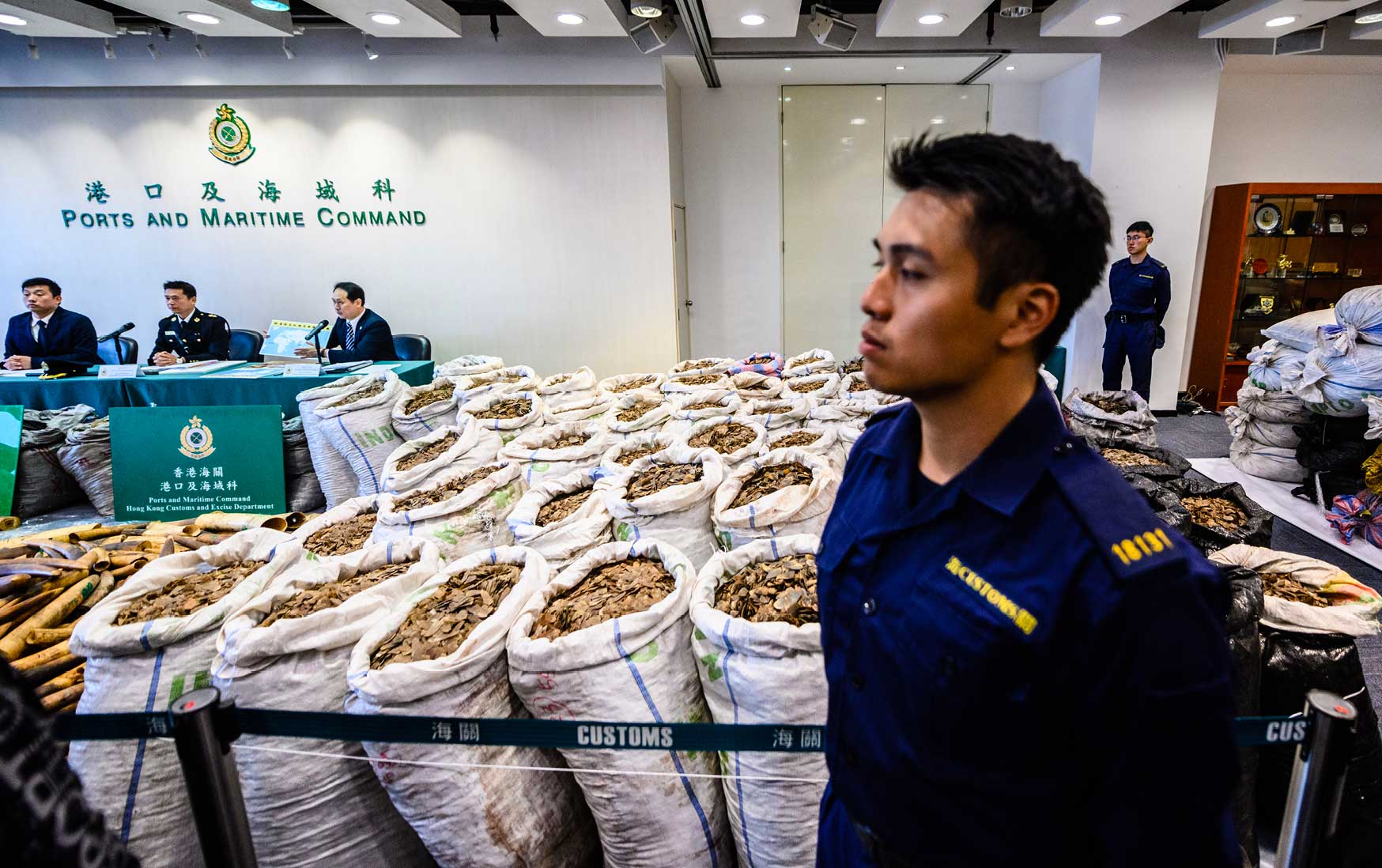
Customs officers stand in front of sacks of seized pangolin scales displayed next to ivory elephant tusks during a press conference at the Kwai Chung Customhouse Cargo Examination Compound in Hong Kong in February 2019. Photo: Anthony Wallace/AFP
Though South Africa represents only a tiny portion of the pangolin range in Africa, the number of seizures marks South Africa as a hub for IWT: a safe stopover between African source populations and consumers in Asia.
According to World WISE seizure data, South Africa is second only to Namibia in the number of pangolins seized between 2018 and mid-2022, and recorded the most pangolin seizures en route to China. During that time, government officials confiscated 160 live Temminck’s pangolins.
According to a 2022 report by researchers Kimon de Greef and Simone Haysom, published by the Global Initiative Against Transnational Organised Crime, perlemoen is frequently smuggled overland from the coast to international airports in southern Africa, then flown to China and Vietnam via Hong Kong. Throughout the journey, corruption eases the risks of detection. Illegal trade in perlemoen is firmly embedded in South African organised crime. The poachers are drawn from criminal gangs and local fishermen. Somali and Chinese intermediaries transport, market, and launder proceeds. Chinese criminal networks buy, dehydrate, export, and distribute perlemoen. Recent seizures indicate that perlemoen smuggling is converging with drug smuggling, particularly methamphetamines.
The South African government, particularly the Department of Forestry, Fisheries, and Environment (DFFE) and South African National Parks (SANParks), is combating IWT with innovation and persistence. The National Integrated Strategy to Combat Wildlife Trafficking (NISCWT) envisions cooperative multidisciplinary enforcement of IWT investigations. SAMLIT, the IWT Working Group of the South African Anti-Money Laundering Integrated Task Force, dedicates financial investigation expertise to important wildlife trafficking cases.

Tactical Response Team officers from South African Police Service (SAPS) arrest pangolin smugglers (lying on the ground) during a joint operation with Pangolin Counter-Poaching Team members in Johannesburg, South Africa. Photo: Luca Sola/AFP
Ensuring the global wildlife trade is legal and sustainable requires commitment, innovation, collaboration, and persistence. Engagement and education with source and destination communities are necessary to incentivise compliance at the local level. Equal resources must be as committed to IWT investigations as those into other types of trafficking, corruption and money laundering. The scientific community, law enforcement, policymakers, and private industry must collaboratively address the supply and demand that perpetuate IWT.
Frontline enforcement is critical to combating IWT, but a shift in focus is vital and overdue. Intensive, high-profile enforcement efforts and donations of equipment to iconic protected areas garner international attention and approbation but do little to detect, deter, or prosecute IWT. It is incumbent on global leaders to ensure that enforcement and prosecutorial staff are trained and equipped to execute complex value-chain investigations to reach the leaders of criminal syndicates. Rather than individual poachers, enforcement actions should focus on those at the highest levels in IWT networks.
IWT compromises the rule of law, disrupts social, political, and economic security, destabilises ecosystems and threatens biodiversity. Nowhere are these impacts more relevant or urgent than in Africa. Many of the world’s most iconic species are found and ruthlessly exploited in Africa, including rhinos, elephants, spotted cats and pangolins. The intrinsic and extrinsic values of Africa’s wildlife are critical to the continent’s sustainable development, yet other countries reap the benefits of exploiting Africa’s wildlife.
The narrative that conservation is an action humans perpetrate on “nature” disregards and degrades our fundamental connection to the natural world. Urbanisation, factory farming and political manipulation of the conservation dialogue worsen this disconnect. If we consider ourselves apart from the natural world rather than a part of it, the exploitation of natural resources is normalised, and the responsibility of protecting wildlife is merely conceptual.
This also overlooks the disproportionate impact of IWT on marginalised communities. With fewer resources, the effects of IWT, including loss of traditional food sources, increased crime, and divergence from cultural traditions, are felt disproportionately by women, children and the poor.
Fighting IWT should be considered an extension of human or social rights; intact ecosystems stimulate stability, prosperity and sustainable human existence.




